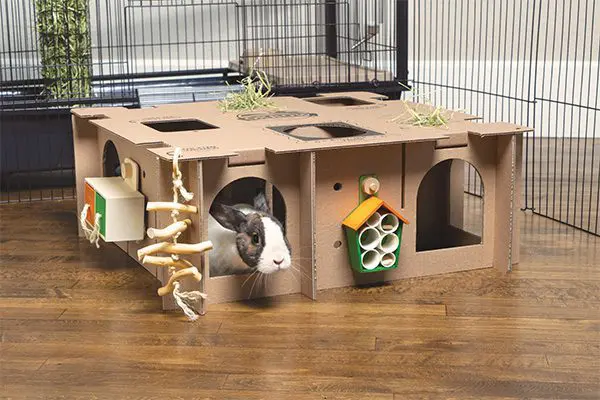Playing games with your pet is a wonderful way to stimulate natural behaviors, encourage exercise, reduce boredom, and increase that special bond between pet and pet caretaker. In this article, we’ll introduce some fun and easy games to try with your pet today!
Hide & Seek
Put a favorite treat (preferably something with a recognizable smell) in a paper sack. Roll it up and tie in place with a piece of raffia or similar pet-safe binding material. Place the package in front of your pet and encourage them to tear through the paper cover to get to the treat inside. Once your pet recognizes his new “treat holder,” start making the game more challenging by hiding it in different places around the room. Eventually, your pet will begin “seeking” as soon as you take him out to play!
Piggy Back
Challenge your pet’s balance and bravery with this fun active game! Lie quietly on your stomach and have a friend place a small treat in the middle of your back to encourage your pet to climb or jump up on your back. Repeat this activity a few times until your pet gets comfortable and stays on your back to enjoy his snack. Slowly start to move your back muscles to get your pet comfortable with his “ground moving”. Very brave pets may even eventually enjoy a ride while their caretakers crawl around carefully on their hands and knees! Note: this game does takes a bit of patience!
Balancing Act
Work on your pet’s balance (and love of treats) by holding a treat high enough above his head to make him stretch to reach it. Gradually increase the height until your furry friend perfects his balancing act!
Tag
Build trust and introduce some exercise into your pet’s daily routine by playing a bit of “tag.” Starting on your hands and knees, wait for a time when your pet is moving toward you. Slowly turn and crawl away from your pet so that he is “in pursuit.” When your pet stops, make sure you stop as well. Once your pet is comfortable “chasing” you, you can try switching roles and playfully pursuing your pet when they turn away from you. Don’t forget – prey animals are naturally wired to feel threatened when being chased, so this part of the game requires a large amount of trust between pet and caretaker!
Peek-A-Boo
Starting slowly, lay down in front of your pet and use a towel to play peek a boo. Observe your companion carefully to see what he enjoys and what may cause anxiety. This game isn’t for the shy pet!
How Can I Best Engage My Pet?
Every pet has a unique personality, with specific likes and dislikes. As a result, your pet may not enjoy all of your attempts to interact – at least at first. Below are some tips and tricks to make sure that the quality time you spend with your pet is enjoyable for you both!
- Consider how your pet’s brain is wired.
- To survive in the wild, prey animals are naturally wary of anything that might be perceived as a predator. Therefore, quick movements or loud sounds may seem predatory and will likely be unwelcome until a certain level of trust is developed between caretaker and pet.
- Think about what motivates your pet.
- A favorite toy or treat, maybe? Using objects that your pet enjoys can help introduce him to new games or activities!
- Would you classify your pet as shy or outgoing?
- Pets that tend to be more hesitant and shy may take more patience and time to warm up to interactive activities with their humans.
- Safety first!
- Always think about potential hazards or injuries that could occur before bringing your pet out to play. A safe environment is a fun environment.
- Trust is the key.
- Building trust with your pet can be a slow and painstaking process, but it’s the only way to build a strong, lasting bond and make the relationship with your pet the best it can be!
Quick Tip: Always observe your pet carefully to see what they like and don’t like. If you notice any signs of discomfort or stress, modify or discontinue the game or activity in favor of one that you know your pet enjoys.
Special thanks to Nancy J. LaRoche for her assistance in the development of this article.


